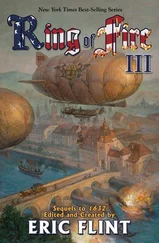Eric Chevillard - Palafox
Здесь есть возможность читать онлайн «Eric Chevillard - Palafox» весь текст электронной книги совершенно бесплатно (целиком полную версию без сокращений). В некоторых случаях можно слушать аудио, скачать через торрент в формате fb2 и присутствует краткое содержание. Год выпуска: 2004, Издательство: Archipelago Books, Жанр: Современная проза, на английском языке. Описание произведения, (предисловие) а так же отзывы посетителей доступны на портале библиотеки ЛибКат.
- Название:Palafox
- Автор:
- Издательство:Archipelago Books
- Жанр:
- Год:2004
- ISBN:нет данных
- Рейтинг книги:3 / 5. Голосов: 1
-
Избранное:Добавить в избранное
- Отзывы:
-
Ваша оценка:
- 60
- 1
- 2
- 3
- 4
- 5
Palafox: краткое содержание, описание и аннотация
Предлагаем к чтению аннотацию, описание, краткое содержание или предисловие (зависит от того, что написал сам автор книги «Palafox»). Если вы не нашли необходимую информацию о книге — напишите в комментариях, мы постараемся отыскать её.
Palafox — читать онлайн бесплатно полную книгу (весь текст) целиком
Ниже представлен текст книги, разбитый по страницам. Система сохранения места последней прочитанной страницы, позволяет с удобством читать онлайн бесплатно книгу «Palafox», без необходимости каждый раз заново искать на чём Вы остановились. Поставьте закладку, и сможете в любой момент перейти на страницу, на которой закончили чтение.
Интервал:
Закладка:

There are nearly two thousand species of snake, Baruglio announced abruptly. If Palafox seems at first not to resemble in any way an asp, that does not necessarily mean that despite everything it isn’t one, as we have seen many a screech owl that resembles an owl (raised eyebrow of our ornithologist duly noted). It was night, Baruglio insisted. That excuses nothing, hissed the ornithologist who will never forgive his brother for having forgotten an anaconda in his aviary, noting the bird of paradise, the lyrebird, the hornbill, the toucan, all these high-end parakeets bred in limited numbers by nature to distract the explorer, compensated for his efforts as a tsetse fly kisses his cheek. Having taken the floor (let him keep it) Zeiger wonders where Palafox nested before he had a cage at his disposal. The egg had only been a stage. In light of recent events and of the manner in which the animal, without having even been invited to sit down, had appropriated the sofa (even a repo man would have avoided eating it on the spot), he must have benefited parasitically from existing structures. In all likelihood, he would dislodge an enfeebled goldcrest and take residence in his nest. The brood collapses overboard, the birds, still weighed down with their eggish reflexes, slow to adapt to the soil — their cardboard skulls strike the corner of a violet, and the only witness to their death is a succulent slug. Palafox settles down, makes himself at home, his head beneath strangely endivelike wings, with no other means of escape from his sad destiny than to dream, he falls asleep. As for the slug, slugs are not famous for their spirit of initiative, Palafox the next day found it there, prepared in its own juice, served warm upon a mint leaf. This hypothesis, for want of being seductive, seemed the most likely. However, upon reflection, Zeiger put it aside, as a man accustomed to marching straight ahead no matter the reeds or rushes, and so it was precisely there in a swamp that he believed he could locate the true habitat of our palmiped. Palafox, therefore, widened and deepened a hole dug by a musk otter, built up the opening with mud, yes, with mud, where would he have procured the bones of a nun?
All the more so as he would have needed quite a few of them. I share your opinion on this point, Ziegler. But back to Palafox’s doings, you were conjuring up the sofa, let’s recall the breakfront, the vase, the liquors, and the books belonging to Algernon. How can you assert that this ferocity is a permanent characteristic of its nature, as characteristic as its goiter, for example, or its exasperating buzzing? Would you feel comfortable judging a being on the basis of only a few isolated facts? When you are angry, Zeiger, it happens, the biographer of Attila waits to see what will happen before writing to his editor that he has a great idea for his next book. Palafox dazzled by the gleam of the chandeliers will doubtless have given himself over to panic. And Pierpont goes on to mention how the trembling flame of a candle drives to similar acts of desperation the geometer moth: this little candlelit dinner beginning in high spirits ends in tragedy… (and if the child conceived beneath the table, during dessert, by a man and a woman, both tipsy, knew how many blue butterflies had paid with their lives to make his birth possible, would we see him ten years later test the twelve blades of his new knife on the lilac caterpillar? — but this is an aside).
Zeiger and Baruglio nod their heads. They are in agreement as far as this goes — free, Palafox lived a nocturnal existence. He lived in a hollow trunk. All day he remained there, immobile, unbudgeable, eyes stitched shut, impenetrable. At dusk, he exited his dugout canoe and went to work, punctual night watchman, guardian of nature’s order, he detected the vole ferreting about, like a fire starting among the crops. Taken one by one, the vole is the gentlest, the most delicate of beings, it arouses deep emotion and the desire within us to contaminate it with some mortal illness of which we will use every care we can muster to cure him. Two voles look almost identical. Three, lassitude sets in. Four eat like ten. Ten in a field closes a mill. One more and the country runs the risk of ruin, begging assistance from a neighboring state which in return for its help demands the return of a mountainous province, wooded, skiable, conquered by armed forces, then consents to the transportation of the supplies, supplies being powdered milk and radish-greens. Were it not for Palafox’s vigilance, his tireless rounds, his heavy but silent flight, since feathers and darkness ignore each other, brush against each other, want to avoid a scene, without his nyctaloptic angel’s eye, his watchmaker’s claws and beak hard at their task, without Palafox we would shiver with hunger, submitting to the humiliating generosity of the enemy that Chancelade at this very moment is tearing to pieces, if all goes as planned.

We have been living under high Palafoxian security most likely for a long time. The Museum has twenty thousand volic crania bequeathed to it by the artist, a collector who made his children pay dearly for their indifference. And yet the oldest of these skulls go back to the belle époque that precedes the first ice age. Thus, concludes Baruglio, by deduction, do we derive information on the probable age of Palafox. Baruglio concludes perhaps a bit too quickly, because nothing allows us to affirm that he had not survived by eating roots and wild fruits until the appearance of the vole. Nor would there have been life here, insists Zeiger, if each species had not been formed until its ideal prey had been fat and numerous enough to nourish it, if the mongoose had awaited the serpent, the serpent the toad, the toad the fly, if the fly had awaited us, etc., but man did not wait for the grocer to open his shop before spreading, he took the initiative. Similarly, not unreasonably, Palafox. Unless his appearance came after that of the vole. It might, what’s more — Zeiger exaggerates, to make sure the point is made — be that not one of the twenty thousand skulls in our possession was cleaned and spit out by Palafox. The vole doesn’t fare well in low temperatures. It constitutes the everyday fare of weasels, foxes, and wild cats. If it falls in water, it goes straight to the bottom. Plague, fire, famines never spare it. Finally, three or four years on, it is only a shadow of itself, it has no taste for living, you wouldn’t even recognize it, it dies from its pretty death. From there, conversation reaches an impasse, only a single step away-a step we will not take. We’re just hitting our heads against the wall, observed Pierpont. For the moment, let’s leave the question of dating aside. We’ll return to it, rest assured. Another point that remains to be clarified: Palafox and sex, which is to say which sex is Palafox? Does he have an organ, if yes where, if not what?
If not, then it’s definitive: I’ve suspected it from the start — Palafox is a starfish. Cambrelin leads the charge. Essentially, starfish, like Palafox, present an axial symmetry reticulated in five and that carmine color which would so delight us, Maureen, if you were to change the water in the tank from time to time. We usually call them starfish, however imprecise and hard to grasp a term it may be. Another common feature, starfish are also weak-willed. Their bodies, tugged at by contradictory urges, tear in two parts, one with three branches, the other with two. Later, the missing half and the amputated arms grow back to form two distinct individuals, indifferent to each other, already torn apart by inner conflict, hesitating between North and South, East and West, North and East, South and West, East and South, West and North. The great advantage in asexual reproduction, surely you will agree with me, resides in its simplicity. It circumvents a series of strategies, humiliating rejections and unpleasant surprises, and one is certainly at the very least spared the six hundred and forty days of gestation that paralyze elephants. Somewhere in the Sargasso Sea, there must be a colony of Palafoxes that all spawned from the one original, who still lives and twitches within each Palafox including yours, Maureen, yours whose water you should change and whose limbs you should try to count. Professor Cambrelin has the distinction of supporting his assertions, if not with disabling proofs, then with tedious erudition. Of course the first starfish did not create itself, despite its five arms, which blows Chamberlain’s theory out of the water.
Читать дальшеИнтервал:
Закладка:
Похожие книги на «Palafox»
Представляем Вашему вниманию похожие книги на «Palafox» списком для выбора. Мы отобрали схожую по названию и смыслу литературу в надежде предоставить читателям больше вариантов отыскать новые, интересные, ещё непрочитанные произведения.
Обсуждение, отзывы о книге «Palafox» и просто собственные мнения читателей. Оставьте ваши комментарии, напишите, что Вы думаете о произведении, его смысле или главных героях. Укажите что конкретно понравилось, а что нет, и почему Вы так считаете.












